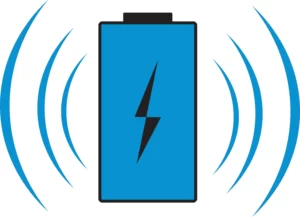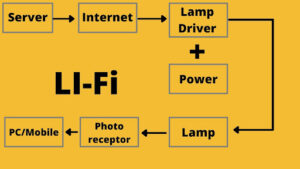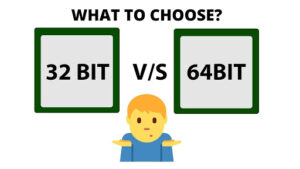
How does GPS work
How does GPS work
Introduction
GPS, or Global Positioning System, has become an integral part of our lives, providing accurate positioning and navigation information. In this article, we will explore the working of GPS, its components, and its applications. Join us on a journey to unravel the technology behind this revolutionary system.
What is GPS?
GPS refers to a satellite-based navigation system that enables precise positioning and timing anywhere on Earth. However, to know where we are in the world, the electronic device that we will use must have a GPS system. It consists of a network of satellites, ground control stations, and user receivers, working together to determine the location of GPS-enabled devices. Today, almost every smartphone or tablet has GPS.
How Does GPS work
There are lots of GPS satellites around the world, each with an atomic clock. In these clocks, the time remains accurate even after millions of years. Even a few milliseconds of time does not change. But in that case, the satellite will have to survive for millions of years. As long as these satellites survive, they send some signals to the Earth and the exact time of sending these signals. The speed of this signal is only 50 bytes per minute. That means it comes to the earth very slowly.
Each mobile phone has a GPS receiver. The function of this receiver is to receive the signal sent from the GPS satellite. The more signals a mobile phone can receive, the stronger the GPS signal will be. However, the signals of three satellites are usually used to know one’s location through GPS on the phone. When a phone is able to receive more than three satellite signals, its position is more accurately known, even the height of how high that phone is above sea level.
When we go out on the road from one place to another, the position and change of our GPS signal start to change. This is because as our location changes, our phone’s GPS antenna begins to receive new GPS signals.
Assisted GPS technology is called AGPS. With this technology with the help of the internet, mobile phone collects information about the satellites placed at that moment.
History of GPS
The system is used About 40 years ago, in the 1960s and 1970s, America first invented the GPS system. At the time, the system was used only by the US military. But after 1995, it was allowed to be used by the general American public. But even then the GPS system was not as good as it is today. Since then, the system has been further improved by sending satellites into space at different times. And today we know very well how advanced this system is. The technology was first made available to the world in 2000.
Components of GPS
To understand how GPS works, let’s delve into its key components:
Satellites
GPS satellites orbit the Earth and continuously transmit signals. These satellites play a crucial role in determining the precise location of GPS receivers on the ground. GPS satellites play a crucial role in the functioning of the GPS system. These satellites are positioned in orbits around the Earth, constantly transmitting signals that are received by GPS devices. Here are some key points about GPS satellites:
-
Orbiting the Earth: GPS satellites orbit the Earth at an altitude of approximately 20,000 kilometres (12,000 miles). They are strategically placed in six different orbital planes, with multiple satellites in each plane.
-
Satellite Constellation: The GPS satellite constellation consists of a minimum of 24 operational satellites. This number ensures global coverage, allowing GPS receivers to access signals from multiple satellites at any given time and location.
-
Precise Timing: GPS satellites are equipped with atomic clocks that provide highly accurate timekeeping. This precise timing is crucial for the trilateration process used to determine a receiver’s position.
-
Signal Transmission: GPS satellites transmit signals in two frequency bands: L1 and L2. The L1 band is used for civilian applications, while the L2 band is reserved for military and authorized government use. These signals carry important data, including satellite ephemeris, almanac data, and the pseudo-random code required for trilateration.
-
Signal Strength: GPS satellites transmit signals with relatively low power, typically around 50 watts. However, due to the proximity of satellites in space and the use of sensitive receivers on the ground, GPS devices can accurately detect and process these signals.
-
Monitoring and Maintenance: The GPS system is meticulously monitored and maintained by ground control stations. These stations track the satellites, collect data, and calculate precise satellite positions. They also ensure that the satellites’ clocks are synchronized and transmit correction information when necessary.
The network of GPS satellites working in harmony with ground control stations and user receivers enables us to enjoy the benefits of GPS technology, from accurate navigation to location-based services.
Ground Control Stations
Ground control stations monitor the GPS satellites, ensuring their proper functioning. They also calculate the satellite positions and transmit correction information to the satellites when required. Ground control stations are vital components of the GPS system that serve as the backbone for monitoring and managing the GPS satellite constellation. Here are some key points about ground control stations:
-
Tracking Satellites: Ground control stations continuously track the GPS satellites in orbit. Using sophisticated tracking systems and antennas, these stations gather essential data such as the satellite’s position, velocity, and timing information.
-
Orbit Determination: By precisely measuring the satellite’s signals, ground control stations can calculate the precise position and orbit parameters of each satellite. This information is crucial for ensuring accurate positioning calculations by GPS receivers.
-
Clock Synchronization: Ground control stations also play a critical role in maintaining the accuracy of the satellite clocks. Atomic clocks on the satellites are constantly monitored and corrected for any discrepancies by the ground control stations. This synchronization is necessary for precise timekeeping and trilateration calculations.
-
Data Collection and Transmission: Ground control stations collect data from the satellites, including their ephemeris and almanac information. Ephemeris data provides precise satellite positions, while almanac data contains orbital information for all satellites in the constellation. This data is periodically transmitted to the satellites for broadcast to GPS receivers.
-
Error Correction: Ground control stations analyze and calculate any potential errors in the GPS signals caused by factors like atmospheric conditions and satellite clock deviations. They generate correction information, known as a differential correction, which is transmitted to the satellites. The satellites then relay this information to GPS receivers, enabling improved positioning accuracy.
-
System Monitoring: Ground control stations continuously monitor the health and performance of the entire GPS system. They ensure that each satellite is functioning correctly and intervene in case of anomalies or malfunctions. This active monitoring helps maintain the reliability and accuracy of GPS signals.
The seamless coordination between GPS satellites and ground control stations ensures the smooth operation and accuracy of the GPS system, providing users with reliable positioning and navigation capabilities.
User Receivers
User receivers are the devices or systems that receive and process signals from GPS satellites to determine the user’s position. Commonly found in GPS devices and smartphones, receive signals from GPS satellites. These receivers process the signals and determine the user’s position through a process called trilateration.
Here are some key points about user receivers:
-
Signal Reception: User receivers have antennas designed to capture GPS signals transmitted by the satellites. The antennas receive these signals, which are extremely weak by the time they reach the Earth’s surface, and amplify them for further processing.
-
Signal Processing: Once the GPS signals are received, user receivers use sophisticated algorithms to process the data contained in the signals. This processing involves decoding the satellite ephemeris, almanac data, and pseudo-random codes.
-
Trilateration Calculation: Trilateration is a mathematical technique used by user receivers to determine the user’s position based on the timing and distance measurements from multiple GPS satellites. By measuring the time it takes for signals to travel from the satellites to the receiver, user receivers can calculate the distance to each satellite.
-
Position Calculation: Using the distances obtained from the trilateration process, user receivers can calculate the user’s position by intersecting spheres or spheres in three-dimensional space. The intersection points represent possible positions, and additional calculations help determine the most accurate position.
-
Accuracy Enhancement: User receivers can employ various techniques to improve positioning accuracy. This includes differential GPS (DGPS), which utilizes correction data received from ground control stations to compensate for signal errors caused by atmospheric conditions and other factors. Assisted GPS (A-GPS) is another technique that utilizes additional data from cellular networks to expedite the initial positioning fix.
-
Application Integration: User receivers are integrated into various devices and systems, such as standalone GPS devices, smartphones, vehicle navigation systems, and wearable devices. These devices and systems utilize the positioning information provided by user receivers to enable navigation, location-based services, and other GPS-dependent functionalities.
User receivers are essential components that allow individuals and businesses to benefit from the accuracy and versatility of GPS technology. With user receivers, GPS devices can provide real-time positioning, navigation guidance, and a wide range of location-based services.
GPS Signals
GPS signals are the radio signals transmitted by GPS satellites that carry crucial information for determining the user’s position. These signals consist of various data components and are essential data components, including satellite ephemeris, almanac data, and a pseudo-random code for the proper functioning of GPS receivers. Here are some key points about GPS signals:
-
Signal Composition: GPS signals are composed of multiple data components that provide important information for positioning calculations. These components include satellite ephemeris, almanac data, and a pseudo-random code.
-
Satellite Ephemeris: Satellite ephemeris data contains precise information about the position, velocity, and timing of each GPS satellite at a specific point in time. GPS receivers use this data to calculate the satellite’s position relative to the receiver’s location.
-
Almanac Data: Almanac data provides general information about the entire GPS satellite constellation, including orbital parameters and health status of the satellites. GPS receivers use this data to determine which satellites are currently visible and available for positioning calculations.
-
Pseudo-Random Code: The pseudo-random code is a unique code assigned to each satellite. It allows GPS receivers to distinguish the signals transmitted by different satellites. By measuring the time it takes for the signals to reach the receiver, the receiver can calculate the distance to each satellite.
-
Signal Frequency Bands: GPS signals are transmitted in two frequency bands: L1 and L2. The L1 band has a frequency of 1575.42 MHz and is used for civilian applications, while the L2 band, with a frequency of 1227.60 MHz, is primarily reserved for military and authorized government use.
-
Signal Modulation: GPS signals are modulated using a technique called spread spectrum modulation. This modulation spreads the GPS signals over a wider bandwidth, making them resistant to interference and improving their ability to be detected and processed by GPS receivers.
-
Signal Strength: GPS signals transmitted by satellites are relatively weak by the time they reach GPS receivers on the ground. However, thanks to the use of sensitive receivers and signal amplification techniques, GPS devices can effectively detect and process these weak signals.
-
Multi-Constellation Support: In addition to the GPS satellite constellation, modern GPS receivers can also receive signals from other global navigation satellite systems (GNSS) like GLONASS, Galileo, and BeiDou. This multi-constellation support enhances positioning accuracy and availability, especially in challenging environments.
GPS signals provide the essential data that GPS receivers require to accurately determine the user’s position. By processing these signals, GPS devices can provide precise location information, enabling a wide range of applications and services.
Trilateration
Trilateration is a mathematical technique used by GPS receivers to determine the precise location of a receiver based on the distances to multiple GPS satellites. By measuring the time it takes for signals to travel from the satellites to the receiver, trilateration enables accurate positioning calculations. Here are some key points about trilateration:
-
Distance Calculation: Trilateration relies on the calculation of distances between the receiver and at least three GPS satellites. These distances are determined by measuring the time it takes for the signals to travel from the satellites to the receiver. Since the speed of signal propagation is known, the distances can be calculated by multiplying the travel time by the speed of light.
-
Spherical Intersection: Trilateration involves drawing spheres around each satellite, centered at the known satellite positions and with radii equal to the measured distances. The receiver’s position lies on the surface of these spheres. By intersecting these spheres, typically using three satellites, the possible receiver locations are narrowed down to a few points.
-
Geometric Solution: Trilateration mathematically solves the intersection of the spheres to determine the exact receiver position. Using geometric principles, the common intersection points of the spheres are calculated, revealing the receiver’s precise coordinates.
-
Overdetermined Systems: In some cases, more than three satellites are used for trilateration. This creates an overdetermined system of equations, allowing for additional error detection and correction. By considering more satellites, the accuracy and reliability of the positioning calculation can be improved.
-
Sources of Error: Trilateration calculations can be influenced by various sources of error, such as signal delays caused by atmospheric conditions, inaccuracies in satellite positions, and measurement errors. Advanced GPS receivers employ techniques like differential GPS (DGPS) and precise satellite positioning information to mitigate these errors and enhance accuracy.
-
Three-Dimensional Positioning: Trilateration provides a three-dimensional position fix, consisting of latitude, longitude, and altitude. This allows GPS receivers to determine not only the horizontal location but also the vertical position of the receiver.
-
Real-Time Updates: Trilateration is performed continuously by GPS receivers, updating the receiver’s position as new signals are received from the satellites. This real-time updating enables dynamic tracking of the receiver’s movements and provides accurate positioning information for navigation and other applications.
Trilateration forms the core principle behind GPS positioning, enabling GPS receivers to accurately determine the user’s location by measuring distances to multiple satellites. This mathematical technique, combined with advanced algorithms and error correction methods, ensures reliable and precise GPS positioning.
GPS Accuracy
GPS accuracy can vary depending on several factors, such as satellite geometry, signal obstructions, and atmospheric conditions. However, modern GPS systems can achieve accuracy within a few meters under ideal conditions. Several factors contribute to GPS accuracy, including the number of visible satellites, signal quality, receiver technology, and environmental conditions. Here are some key points about GPS accuracy:
-
Number of Satellites: GPS accuracy improves with the availability of signals from more satellites. When a GPS receiver can receive signals from a larger number of satellites simultaneously, it can perform more robust positioning calculations and achieve higher accuracy.
-
Dilution of Precision (DOP): DOP is a measure of the geometric arrangement of satellites in relation to the receiver’s position. Various DOP values, such as Position Dilution of Precision (PDOP) and Horizontal Dilution of Precision (HDOP), indicate the influence of satellite geometry on accuracy. Lower DOP values result in better accuracy. Better accuracy comes with a Lower Dop
-
Signal Quality: The quality of GPS signals received by the receiver affects accuracy. Factors such as signal blockage or interference from buildings, trees, or atmospheric conditions can weaken or distort the signals, leading to reduced accuracy. Open sky views with minimal obstructions yield better signal quality and accuracy.
-
Receiver Technology: The technology and sensitivity of the GPS receiver play a crucial role in accuracy. Advanced receivers with high-quality components and superior signal processing algorithms can better handle weak signals, mitigate interference, and deliver more accurate positioning results.
-
Augmentation Systems: Augmentation systems like Differential GPS (DGPS) can enhance GPS accuracy. DGPS uses additional reference stations to calculate and transmit correction data, compensating for errors in GPS signals caused by factors like atmospheric disturbances. This correction information enables improved accuracy, especially in critical applications.
-
Selective Availability (SA): Selective Availability, an intentional degradation of GPS accuracy by the U.S. government, was turned off in 2000. This resulted in a significant improvement in civilian GPS accuracy, allowing for more precise positioning calculations.
-
Environmental Factors: Environmental conditions such as atmospheric disturbances, multipath effects (signal reflections), and ionospheric activity can introduce errors in GPS measurements. These factors can impact accuracy, particularly in challenging environments like urban canyons or areas with dense foliage.
-
Real-Time Corrections: Real-time corrections, obtained through services like Real-Time Kinematic (RTK) positioning or Precise Point Positioning (PPP), can further enhance GPS accuracy. These techniques use real-time correction data from reference stations or satellite-based augmentation systems to achieve centimetre-level accuracy in certain applications.
It’s important to note that while GPS accuracy has significantly improved over the years, there can still be variations and limitations depending on the specific circumstances and the quality of the GPS receiver used.
Applications of GPS
GPS has found extensive applications across various industries. Let’s explore some of its key applications:
Navigation
Navigation is one of the primary applications of GPS technology, providing users with the ability to determine their precise location and navigate to desired destinations. With the help of the GPS navigation system, we got a huge help in the way of travel. GPS navigation systems offer a wide range of features and functionalities that assist users in reaching their destinations efficiently and safely. They provide real-time directions, turn-by-turn guidance, and accurate arrival time estimates, making navigation convenient and efficient. Here are some key points about GPS navigation:
-
Positioning and Tracking: GPS navigation systems use GPS receivers to accurately determine the user’s current position. By constantly tracking signals from multiple satellites, the system updates the user’s position in real-time, providing a reliable and up-to-date location.
-
Mapping and Routing: GPS navigation systems utilize digital maps to display the user’s position and provide visual guidance. These maps include roads, landmarks, points of interest, and other relevant information. Based on the user’s destination input, the system calculates the most efficient route and offers turn-by-turn directions.
-
Turn-by-Turn Directions: GPS navigation systems provide detailed, step-by-step instructions for reaching a destination. The system indicates upcoming turns, lane guidance, and estimated arrival times. Voice guidance further enhances the user experience by audibly providing directions, allowing for hands-free navigation.
-
Re-Routing and Traffic Updates: GPS navigation systems can dynamically adapt to changing road conditions. They monitor traffic data in real-time and offer alternative routes to avoid congestion or roadblocks. This feature helps users save time and select the most efficient path to their destination.
-
Points of Interest (POIs): GPS navigation systems incorporate extensive databases of points of interest. These can include restaurants, hotels, gas stations, tourist attractions, and more. Users can search for specific POIs or browse categories to find nearby amenities and services.
-
Voice Recognition and Natural Language Input: Advanced GPS navigation systems support voice recognition technology, allowing users to input destinations or make commands using their voice. Natural language input enables more intuitive and convenient interaction with the system, enhancing the overall user experience.
-
Offline Navigation: Some GPS navigation systems offer offline navigation capabilities, allowing users to download maps and directions in advance. This feature is particularly useful in areas with limited or no internet connectivity, ensuring uninterrupted navigation even in remote locations.
-
Integration with Other Technologies: GPS navigation systems can integrate with other technologies and services. For example, they can connect to smartphones via Bluetooth for hands-free calling and audio streaming. Integration with advanced driver assistance systems (ADAS) provides additional safety features, such as collision warnings and lane departure alerts.
With their precise positioning capabilities, comprehensive maps, and advanced features, these systems make it easier and more efficient to reach destinations while providing a safer and more enjoyable driving experience.
Location-based Services
Location-based services, powered by GPS, enable applications to provide information, recommendations, and personalized experiences based on the user’s current location. These services leverage GPS positioning data to offer personalized and context-aware experiences, from finding nearby restaurants to tracking fitness activities. Here are some key points about location-based services:
-
Geolocation: Location-based services rely on geolocation to determine the user’s position using GPS coordinates. By accessing the GPS receiver in a device, LBS applications can retrieve accurate location data, enabling a wide range of location-based functionalities.
-
Mapping and Directions: One of the primary uses of location-based services is mapping and directions. LBS applications provide interactive maps, route planning, and turn-by-turn directions to guide users to their desired destinations. These services enhance navigation, whether by foot, car, or public transportation.
-
Geotagging and Social Media: Location-based services enable users to geotag their photos, posts, or check-ins on social media platforms. Geotagging adds location metadata to the content, allowing users to share their experiences and discover nearby points of interest recommended by their social network.
-
Location-based Advertising: LBS can deliver targeted advertising based on the user’s location. Advertisements can be customized to display relevant offers, promotions, or recommendations specific to the user’s current whereabouts. This targeted approach increases the effectiveness of advertising campaigns.
-
Proximity-based Notifications: LBS applications can send notifications or alerts to users when they enter specific geographic areas or reach designated points of interest. For example, users may receive notifications about nearby sales, events, or important updates relevant to their location.
-
Location-based Gaming: Location-based gaming combines GPS technology with gaming elements. Players engage in virtual experiences that integrate real-world locations and allow interaction based on the user’s physical presence. These games encourage exploration and social interaction among players.
-
Asset Tracking and Fleet Management: Location-based services find extensive use in asset tracking and fleet management applications. GPS-enabled devices and systems can track the real-time location and movement of vehicles, assets, or personnel. This helps optimize logistics, improve security, and enhance operational efficiency.
-
Emergency Services and Public Safety: LBS play a crucial role in emergency services and public safety applications. GPS technology allows emergency responders to locate individuals in distress accurately. Public safety agencies also utilize location-based services to alert citizens about emergencies, such as severe weather conditions or local incidents.
-
Personalized Recommendations: LBS applications can provide personalized recommendations based on the user’s location. For example, users may receive suggestions for nearby restaurants, shops, or activities based on their preferences, past behaviour, or user reviews.
Location-based services have transformed the way businesses and individuals interact with their surroundings. By leveraging GPS technology, these services offer convenience, personalization, and valuable information tailored to the user’s current location.
Geocaching
Geocaching is a popular outdoor recreational activity that combines elements of treasure hunting, exploration, and GPS technology. Participants, known as geocachers, use GPS coordinates to navigate to hidden containers, called geocaches, which are placed by other geocachers in various locations around the world. Here are some key points about geocaching:
-
Objective: The main objective of geocaching is to locate hidden geocaches using GPS coordinates provided on geocaching websites or mobile applications. Geocachers rely on their GPS-enabled devices to guide them to the precise coordinates of the geocache.
-
Geocaches: Geocaches come in various sizes and types, ranging from small containers to larger ammo boxes or even virtual caches. They typically contain a logbook where geocachers can sign their names and leave messages. Some geocaches may also contain small trinkets or items for trading.
-
Coordinates and Hints: Geocache listings include latitude and longitude coordinates that guide geocachers to the general location of the cache. Additionally, hints may be provided to help narrow down the search within the vicinity. Geocachers must use their navigational skills and problem-solving abilities to locate the hidden cache.
-
Variety of Locations: Geocaches can be found in a wide variety of locations, including urban areas, parks, forests, mountains, and even underwater. Geocaching provides an opportunity to explore both familiar and unfamiliar places, encouraging outdoor activities and a sense of adventure.
-
Community and Logbook: Geocaching fosters a vibrant community of geocachers who share their experiences and discoveries. Geocachers often leave comments and log their visits on the geocache’s logbook, providing feedback to the cache owner and sharing their journey with others.
-
Trackables: Some geocaches may contain trackable items with unique codes. These trackable can be logged online, and geocachers can help them travel from one geocache to another, often with specific goals or destinations in mind. Trackables add an additional layer of interactivity and storytelling to the geocaching experience.
-
Difficulty and Terrain Ratings: Geocaches are assigned difficulty and terrain ratings to indicate the level of challenge in finding and accessing them. These ratings help geocachers choose caches that align with their skill levels and preferences.
-
Geocaching Etiquette: Geocachers follow a set of guidelines and etiquette to ensure the enjoyment of the activity and the preservation of the environment. This includes respecting private property, rehiding geocaches securely, and leaving no trace of their visit.
Geocaching provides a unique blend of outdoor adventure, technology, and community engagement. It appeals to people of all ages and interests, offering an exciting way to explore the world, discover hidden treasures, and connect with a global network of geocachers.
Conclusion
GPS has become an indispensable tool in our modern world, transforming the way we navigate, explore, and interact with our surroundings. Its reliable positioning capabilities, widespread availability, and diverse applications make it an invaluable asset in various fields.
FAQs
1. How many GPS satellites are in orbit? Currently, there are approximately 30 operational GPS satellites in orbit.
2. Can GPS work without an internet connection? Yes, GPS can work without an internet connection. It relies on satellite signals to determine the user’s position.
3. Are GPS systems accurate indoors? GPS signals can be weakened or blocked by indoor structures, resulting in reduced accuracy or signal loss. Indoor positioning technologies, such as Wi-Fi and Bluetooth, are often used in conjunction with GPS for indoor positioning.
4. Can GPS be used for tracking vehicles? Yes, GPS tracking systems are commonly used to monitor and track vehicles for various purposes, including fleet management and theft prevention.
5. How does GPS improve the accuracy of timekeeping? GPS satellites have highly precise atomic clocks onboard. By receiving signals from multiple satellites, GPS receivers can calculate the time delay of each signal, which helps synchronize timekeeping devices with atomic accuracy.
|
Read More |
|
|






